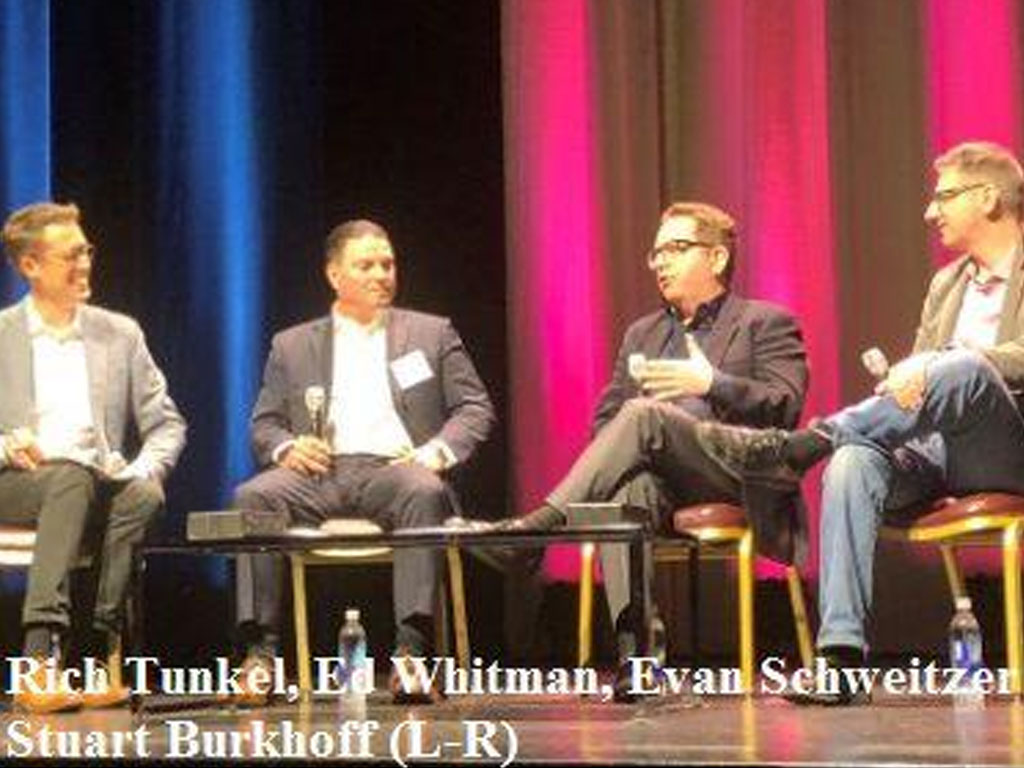Great News For Radio #More Ad Dollars #Radio Revenue Increase #Better Ads Needed #Good News For DJ’s
After sticking a toe in radio several years ago, major consumer packaged goods advertisers are increasing their radio budgets. CPG companies are on track to spend more than $100 million on radio this year after allocating only a few million dollars to the medium in 2016, Nielsen Senior VP, Local Audio Rich Tunkel told the New Jersey Broadcasters Association conference last week. At the same time, big billion dollars advertisers like Procter & Gamble are expanding beyond just using network radio and are adding national spot radio to their campaigns.
P&G, the world’s largest advertiser, has been a big network radio user since 2017 years, using it as a low cost vehicle to provide tonnage on a national scale. But as network inventories have tightened and as the CPG giant looks to heavy up in specific markets, it is now using national spot radio.
After shifting some of its TV budget to radio, P&G is “seeing that they will exceed most of their sales goals,” Ed Whitman, VP & Director of Sales at Katz Tri-State Radio, said during a panel at the convention in Atlantic City, NJ. “We just did a recent campaign with them for Crest which was very well received.”
Walmart, another big national brand advertiser, is also shifting some of its budget to radio, Whitman said. “They went to a big heavy network play and now [are doing] a lot more spot radio.”
While the return of CPG advertisers to radio provided a shot in the arm for radio networks, it initially didn’t trickle down to local stations. But that’s changing as these large brand advertisers augment their network buys with national spot. “We’ve got a lot of activity in the back half,” Whitman added. “There’s a lot of forward momentum for radio. Folks are seeing the sales line up.”
In fact, core national revenues at Katz are up during the past two years, no small feat in today’s challenging ad marketplace. “It’s all coming from core advertisers, new advertisers, and folks converting and shifting some of their media mix modeling data to radio,” Whitman said.
Calling audio “the hottest ad category of 2019,” Tunkel said audio comes up in “almost every conversation we have with advertisers today.” That includes growing client interest in the red-hot podcasting sector, the smart speaker tech explosion and traditional AM/FM radio. “It’s clear advertisers are paying more attention to audio in their strategy,” Tunkel said.
What Radio Means For Advertisers
The panel brought an advertiser’s perspective to the conference, which is attended by suburban New Jerseys broadcasters, along with their big city peers from New York and Philadelphia, who have significant audience and client bases in the Garden State.
Stuart Burkhoff, Senior Director, Media Planning & Strategy for Altice USA, the fourth largest cable provider in the U.S., was greeted with an outburst of applause when he said the company has an acronym for how it uses radio. The “R” stands for relevance – “People are tuning into their passion point, whether sports, news or music.” “A” equals authenticity: “We leverage not just our creative but also work with DJs, especially at the local level because they are celebrities in their markets. These are the original social influencers.” “D” stands for delivery, the frequency that comes with running a healthy flight of :60s or :30s. “I” is for impact – “What you can do with radio, the theater of the mind.” “O” means original – “It’s been around for a while and it’s worked.”
Group M, the agency that handles media buying for Altice, uses local radio stations that align with geographic areas where people currently don’t use its cable TV service. “What makes radio so great here is that we’re able to pinpoint the county or zipcode or the one or two stations that will best align with reaching the most amount of people to get them to sign up for the service,” said Evan Schweitzer, Senior Partner, Client Service Director Local Broadcast for Group M. “You can’t do that on television because you have to buy the entire market. This is much more efficient and you’re able to target the exact people you want to reach.”
Schweitzer added that the way GroupM buys radio “has changed a lot” from relying exclusively on broadcast radio to a more “holistic” approach that also includes streaming. “Some clients want 80% radio and 20% streaming,” he said, noting that radio station streams are part of the 20%.
While the majority of GroupM’s radio buys are spot campaigns, Schweitzer said clients increasingly look to include DJ endorsement ads. “I hear it over and over that clients want a more organic connection from the DJs,” Schweitzer, said.
Endorsement ads are most impactful, Burkhoff said, when the personalities are given flexibility to “be loose and keep it authentic. We want them to have fun with it and speak from the heart.”
The panel also spoke about ways that radio could improve. Burkhoff called it “one of the most difficult channels to measure” from a campaign impact perspective. Tunkel said a common challenge cited by advertisers is that radio is not easy to buy. Whitman said Katz is trying to make it simpler for clients by using technology and data and “bringing creative ideas to the table.” And Burkhoff said “authenticity” isn’t only important for DJ endorsement adds but also for how radio positions itself to marketers. “It’s recognizing what its strengths are and being true to what it can do and how it can work in conjunction with other channels.” – Paul Heine

